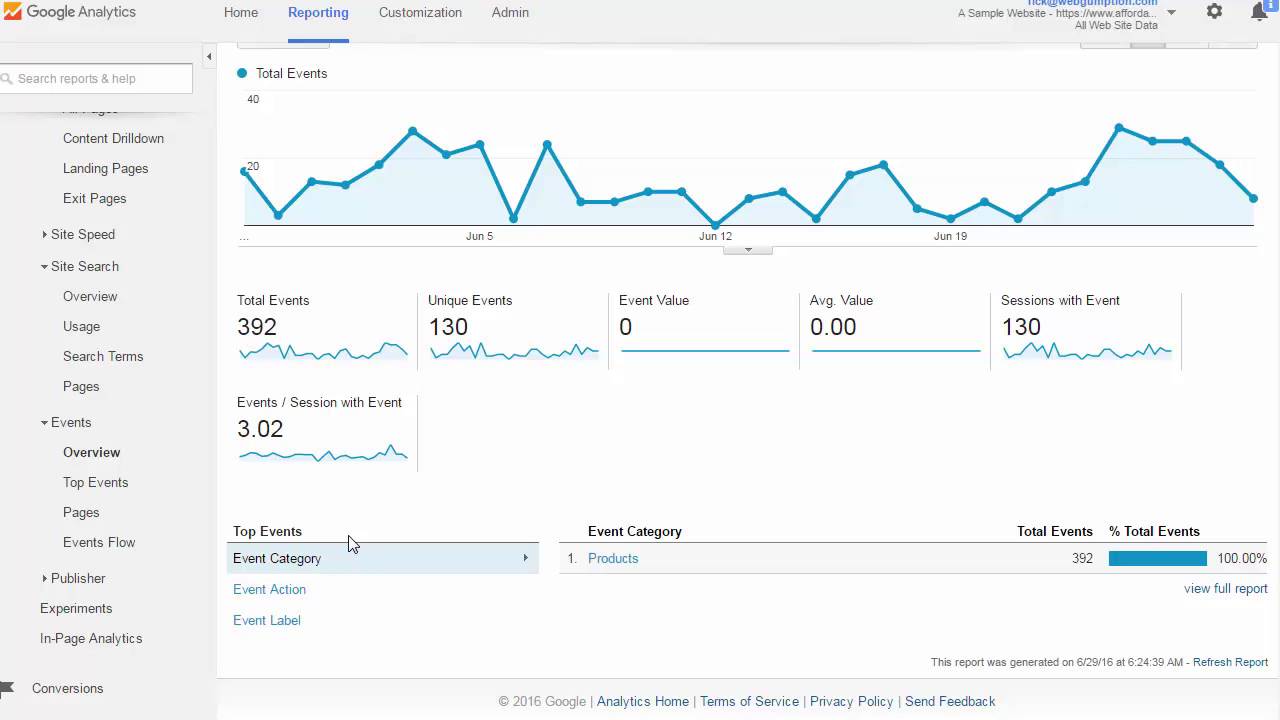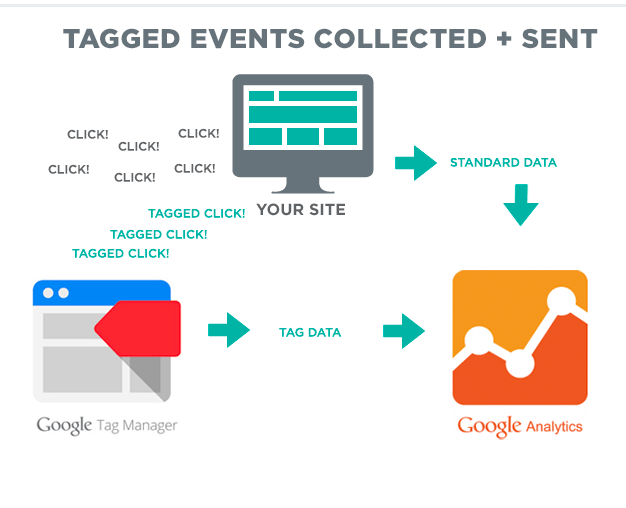Top Guidelines Of Google Analytics Event Tracking
Table of ContentsNot known Details About Google Analytics Event Tracking The 3-Minute Rule for Google Analytics Event TrackingOur Google Analytics Event Tracking StatementsGoogle Analytics Event Tracking Fundamentals ExplainedGoogle Analytics Event Tracking for DummiesSome Of Google Analytics Event Tracking

If you're mosting likely to establish occasion tracking manually, after that you're going to need to add some additional code to the elements you intend to accumulate data from. The code you're mosting likely to work with will certainly look something similar to this: There are four parts within that code snippet that you're mosting likely to require to define on your own: occasion, Category, occasion, Activity, event, Label and occasion, Value.
As you can see, two of these are called for (category and action) while tag and worth are optional. It all relies on the kind of info you desire relayed back to Google Analytics when a user clicks the specified element (Google Analytics Event Tracking). It will be a lot easier to define these elements if you evaluate your website and choose which elements/actions you intend to track
Google Analytics Event Tracking for Beginners
Now, you'll be asked to define the and and you'll want to select from the drop-down menu that shows up when you click. This will certainly raise the very same occasion monitoring elements we checked out earlier, which you'll require to fill up out. When you've defined these, you can move to the 2nd box and select the trigger that will certainly terminate your tag.
On the next screen, you'll additionally have an area for calling your trigger and, if you click on the box, you'll see a list of the various triggers you can pick. In this instance, we want to select and afterwards pick the alternative listed below. Then you'll set the trigger to just discharge when an aspect is clicked with an URL which contains the.
Easy - Occasion tracking! Occasion monitoring gives you an image of how individuals involve with your website and service. Read on as we check out every little thing you need to understand, including what it is, why you need to track events, exactly how to take care of events data, and various other relevant FAQs you might have.
An Unbiased View of Google Analytics Event Tracking
You can switch between your occasion groups, activities, and tags in the Top Events report. The Occasion Pages record presents the web pages where occasions are set off.
Occasions in Google Analytics have 4 primary elements. Google Analytics makes use of these codes to track individual interactions and team them into occasion records (Google Analytics Event Tracking).
A checklist of the specifications you can her response track on your website is on the. After inspecting all necessary areas, you can click "X" to shut the window and return to the Review menu on the.
Not known Facts About Google Analytics Event Tracking

Picking "False" will certainly prevent that session from being a bounce. If you haven't done so, you may require to establish a variable in the Google Analytics Setups box. Click "New Variable ..." if you can not find one to choose. After this, enter your GA tracking ID in the Tracking ID field.
Your ID will certainly get on top of the display. To do this, follow the next series of actions: After configuring the fields, select the "Triggering" section. When configuring your new trigger, click the more "+" button, then the "pencil" button, then pick your trigger kind. Tag your websites trigger and define the problems that lead to trigger firing.
All about Google Analytics Event Tracking

When it familiarizes which sections and aspects are guiding clients through your conversion channel, you still will not understand. Without occasion tracking, GA reports will just count gos to as single-page sessions, also if users spend a whole lot of time on one page and engage with it dramatically (and a bounce).
How does event monitoring achieve this?Single-page sessions understood as bounces begin and end on the same page. Without event tracking, GA will categorize an individual's browse through as a bounce if they don't navigate to another page, no matter how they communicate with it. A video-rich web page can have a greater bounce price if occasions are not tracked.
Google Analytics Event Tracking Fundamentals Explained
Nevertheless, for GA to take event hits right into account when gauging bounce rates, you must pick "Non-interaction occasion" as "False" during the GTM setup. Establishing "event goals" with occasion action is a superb method to keep an eye on customer activities you value extremely, such as new lead entries or clicks on a phone call to activity.